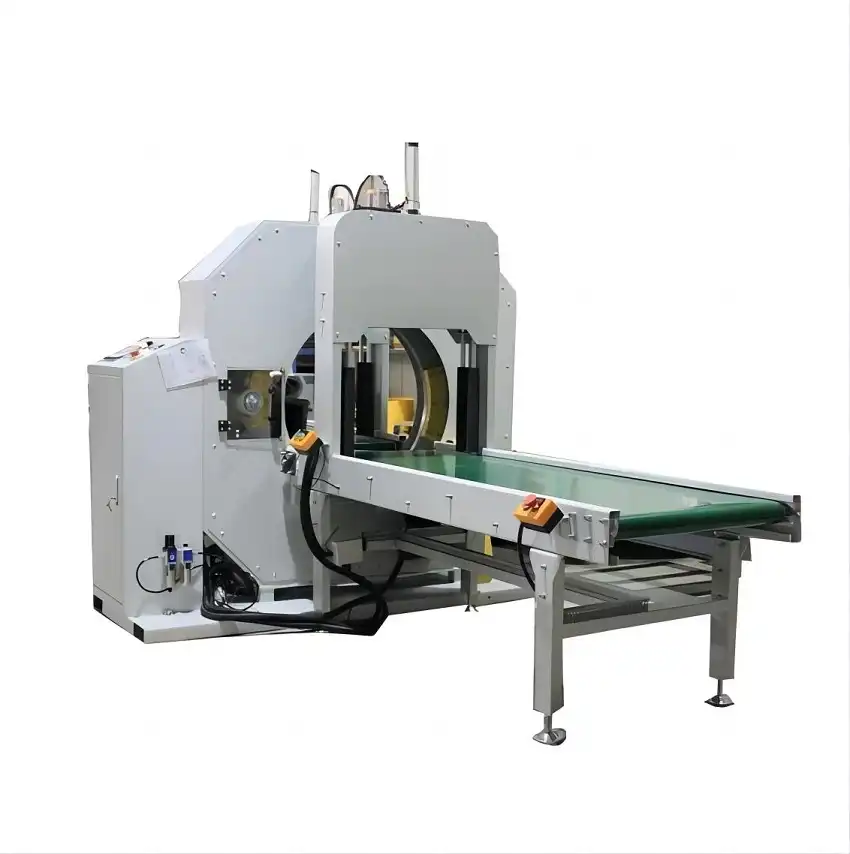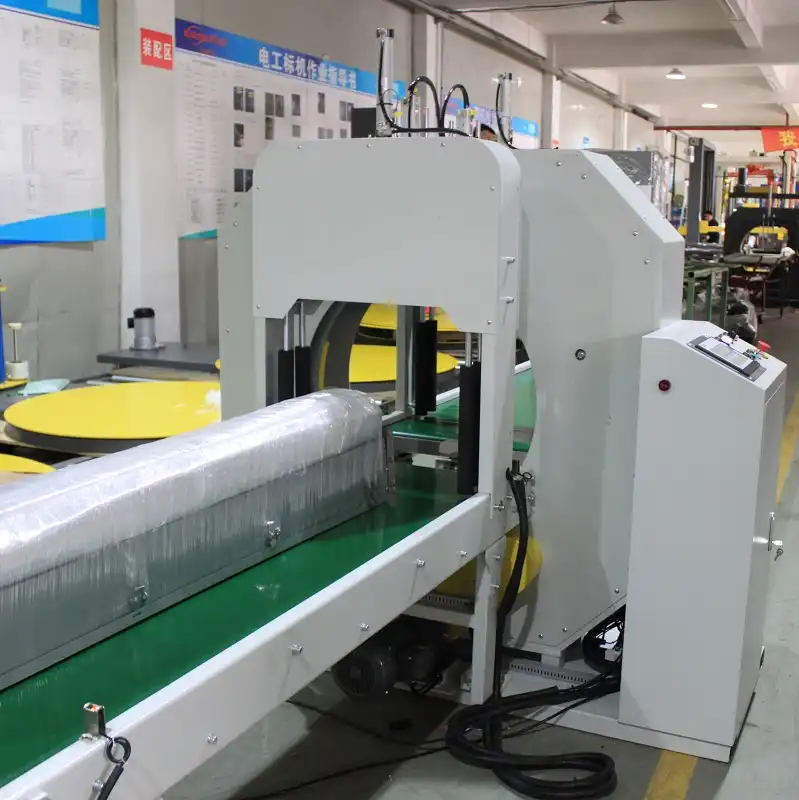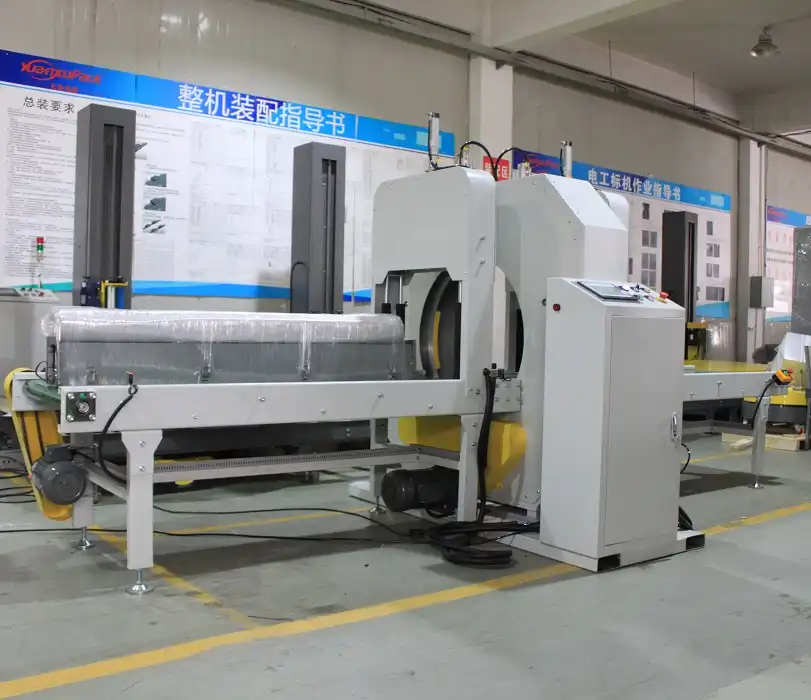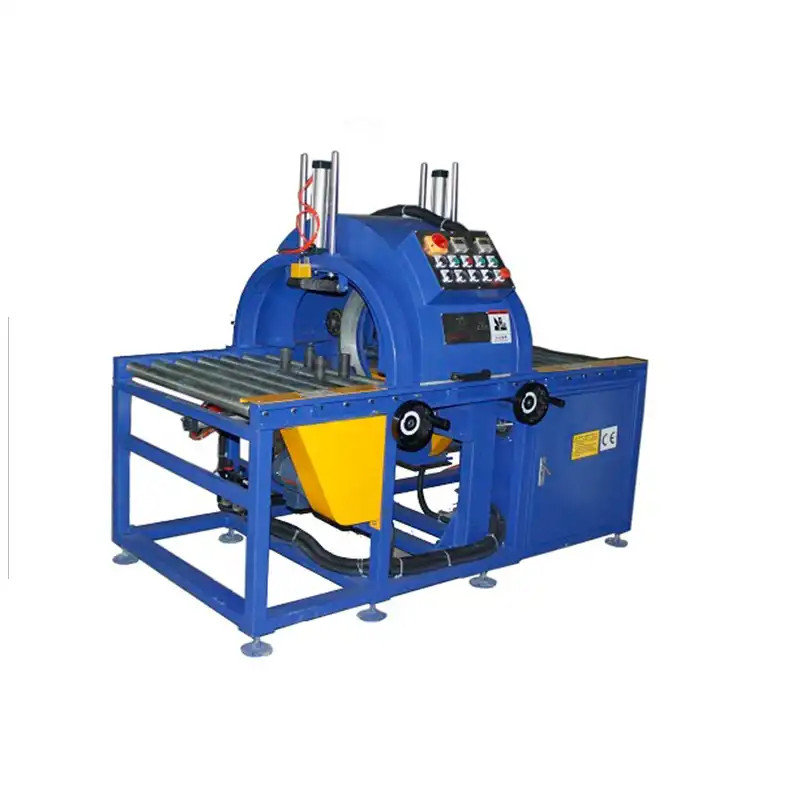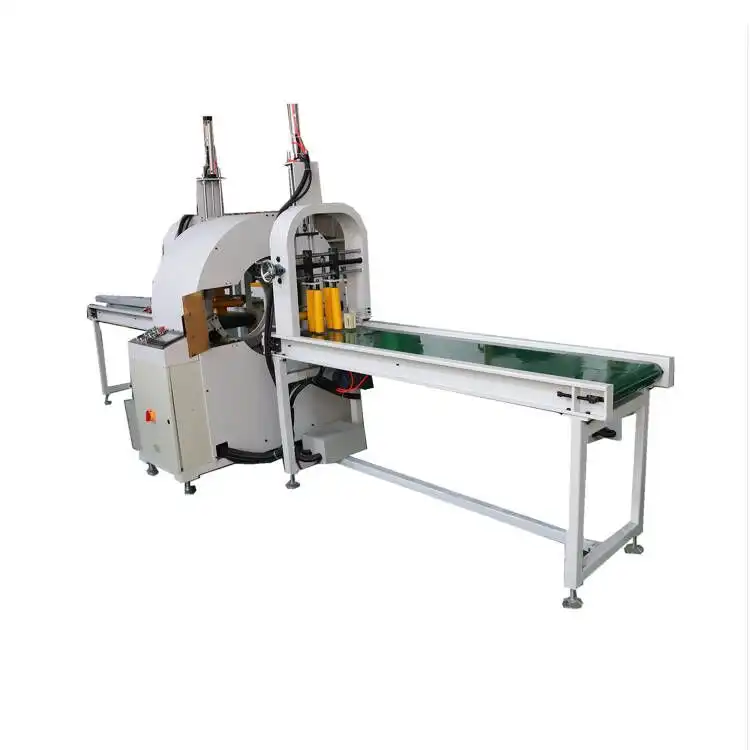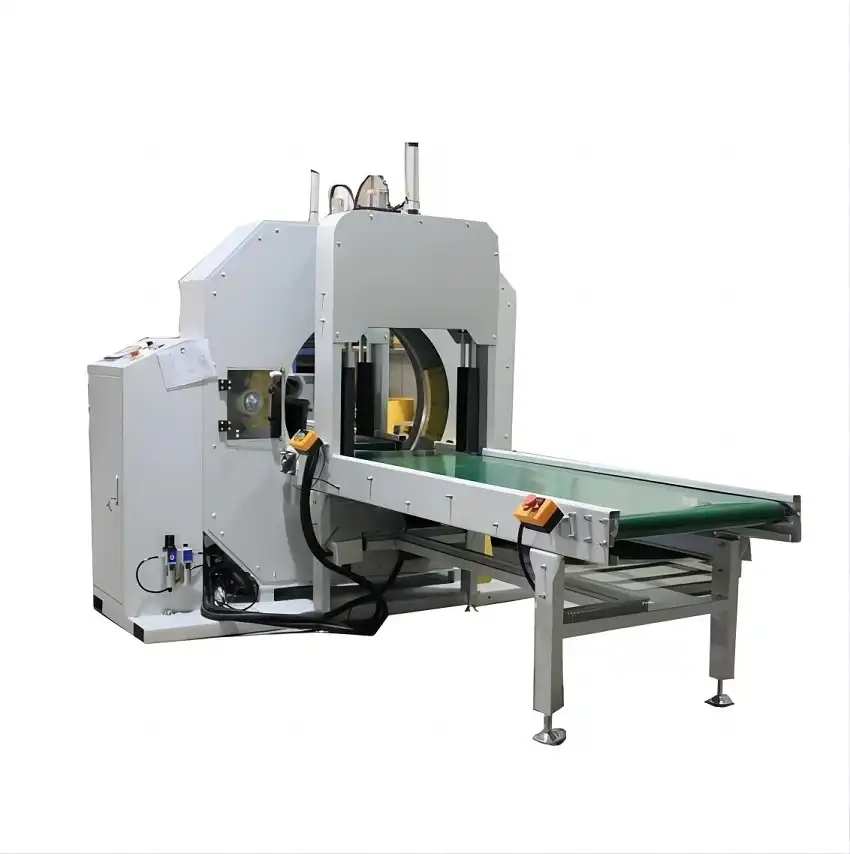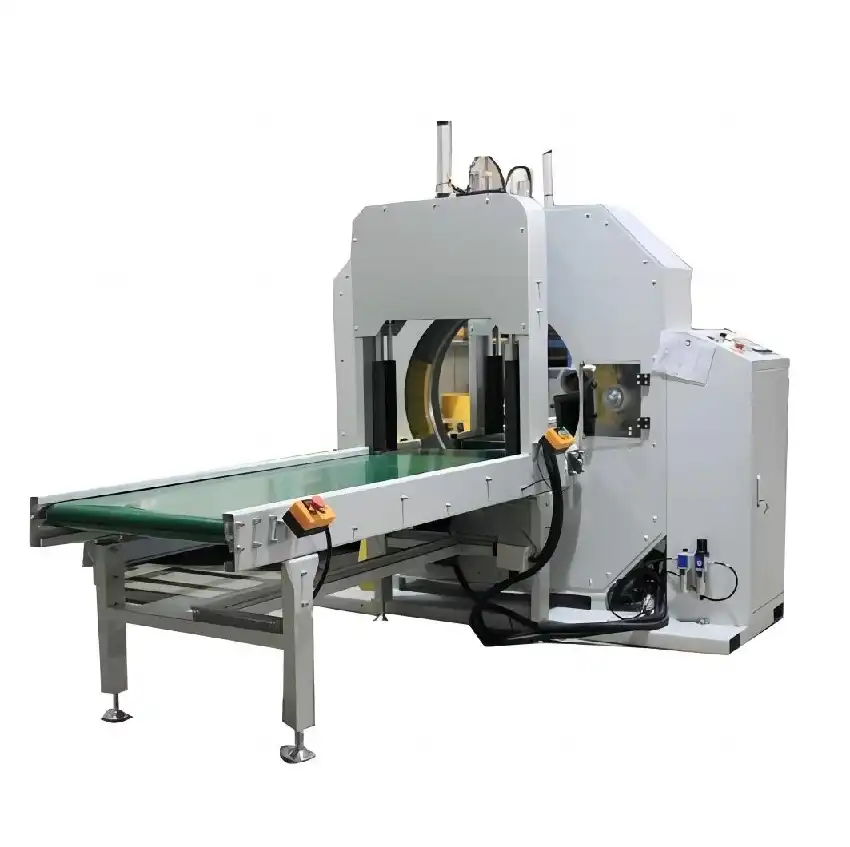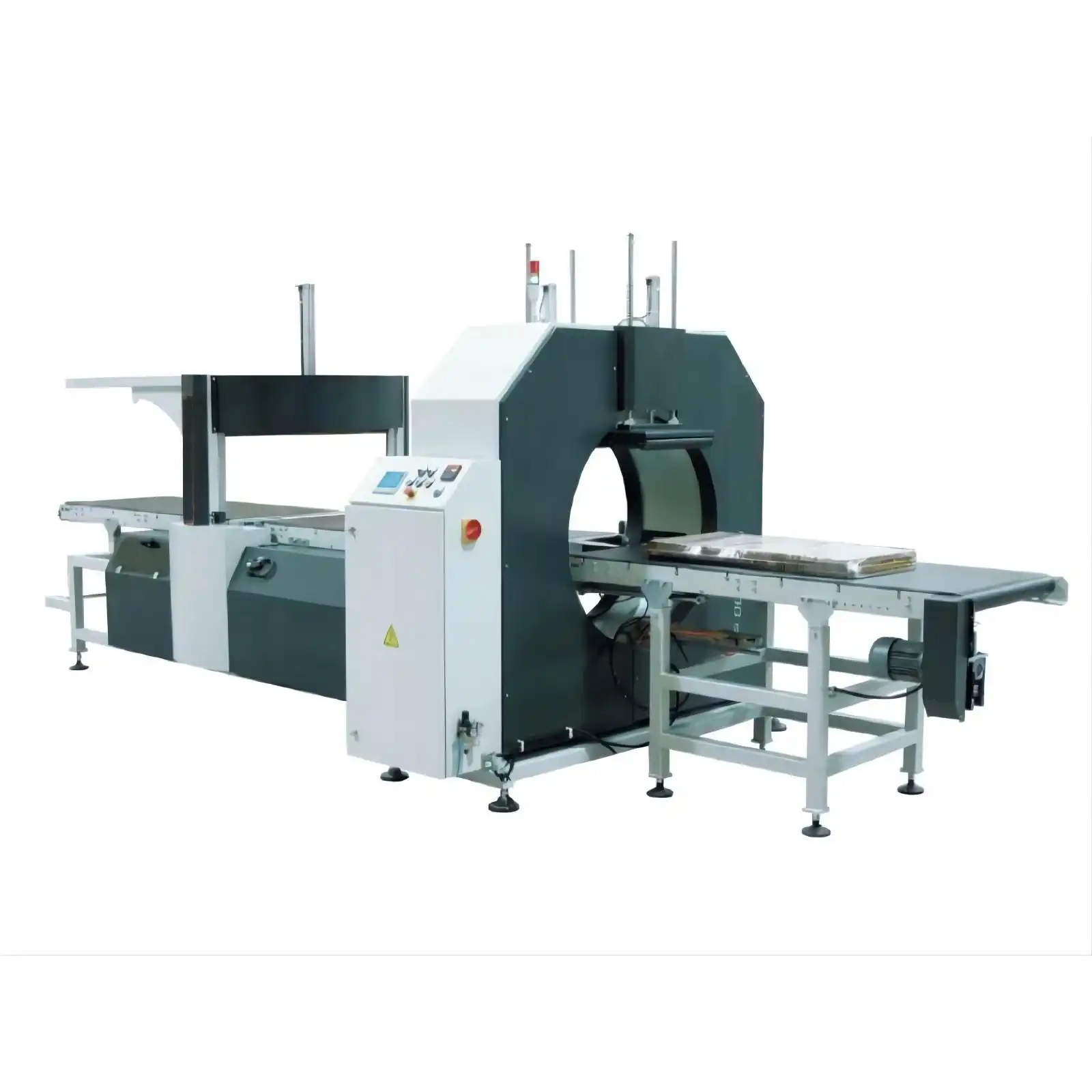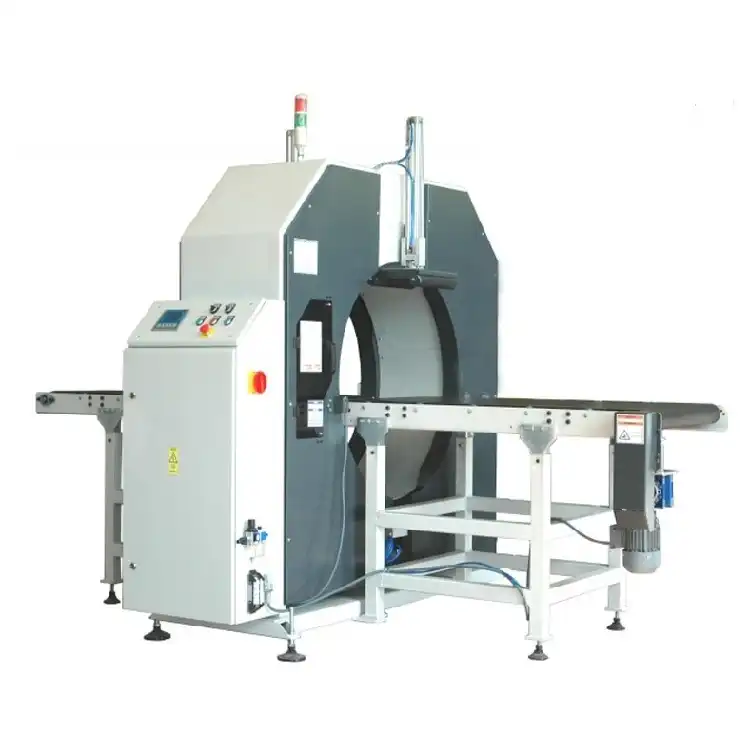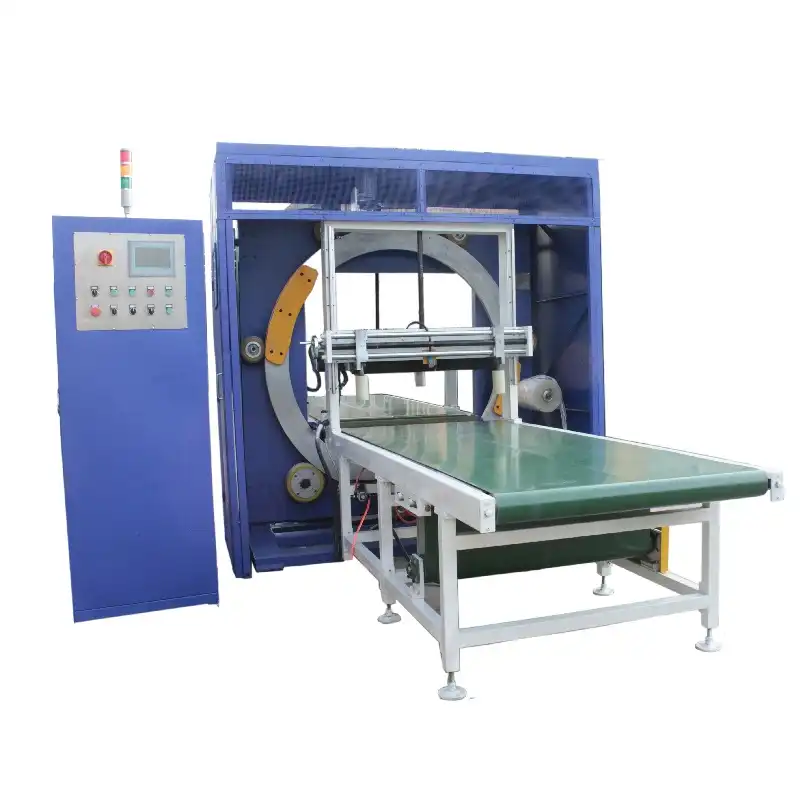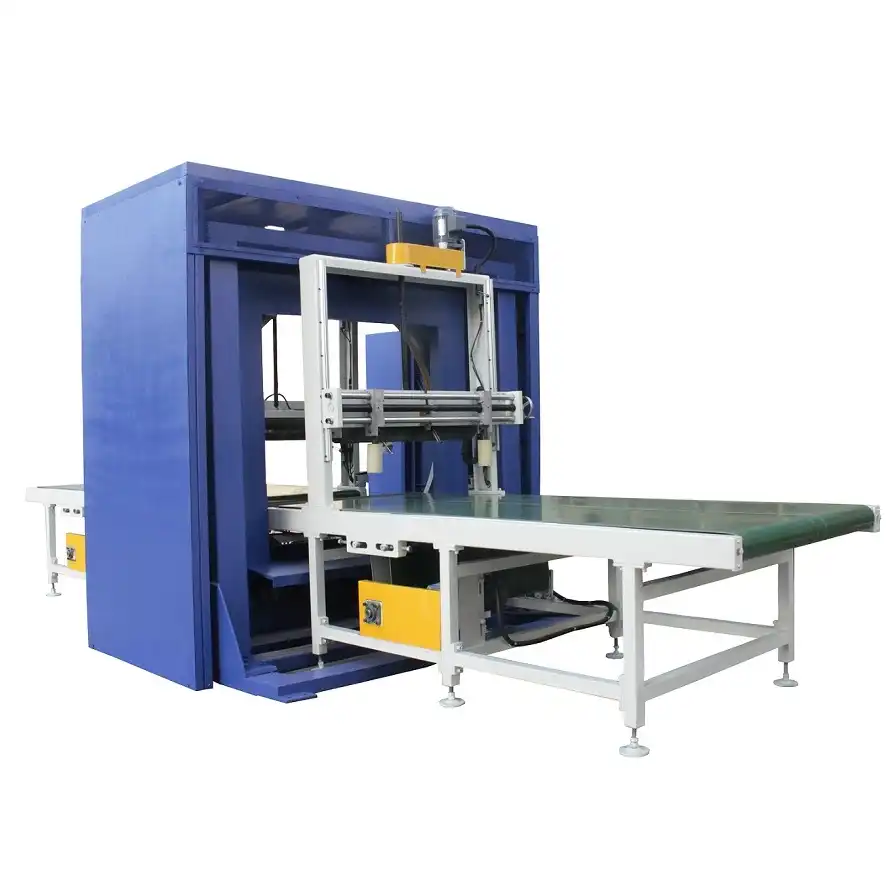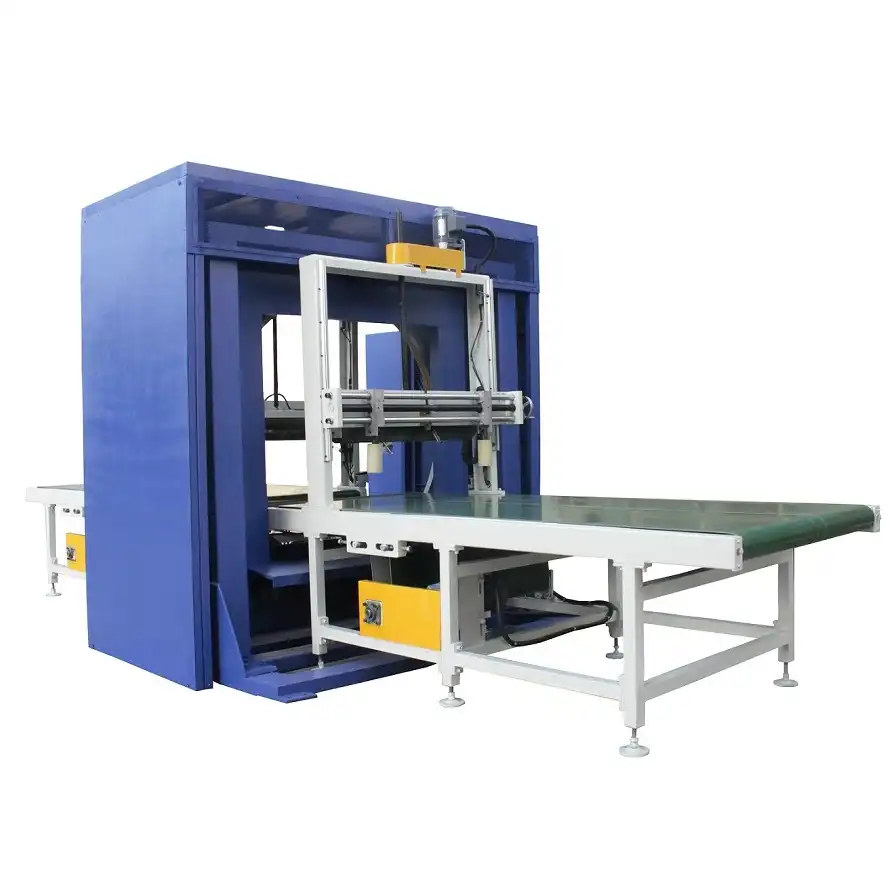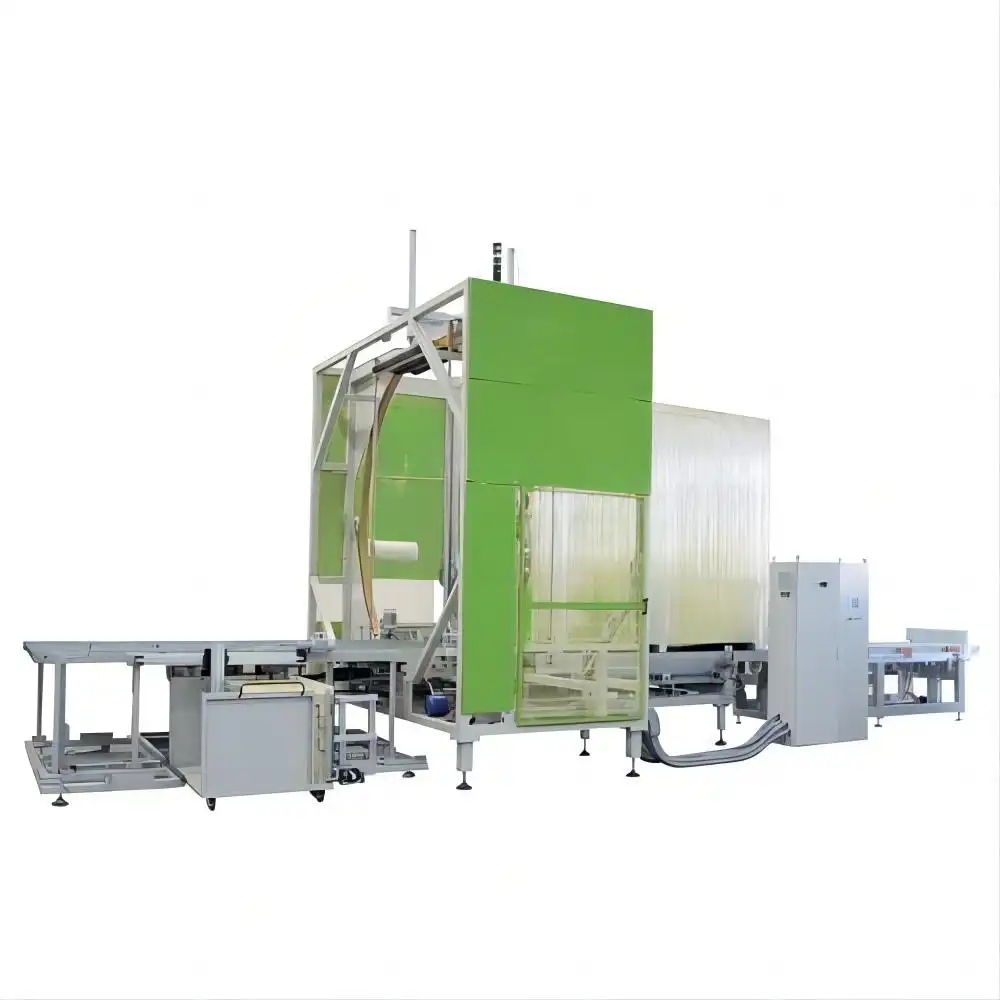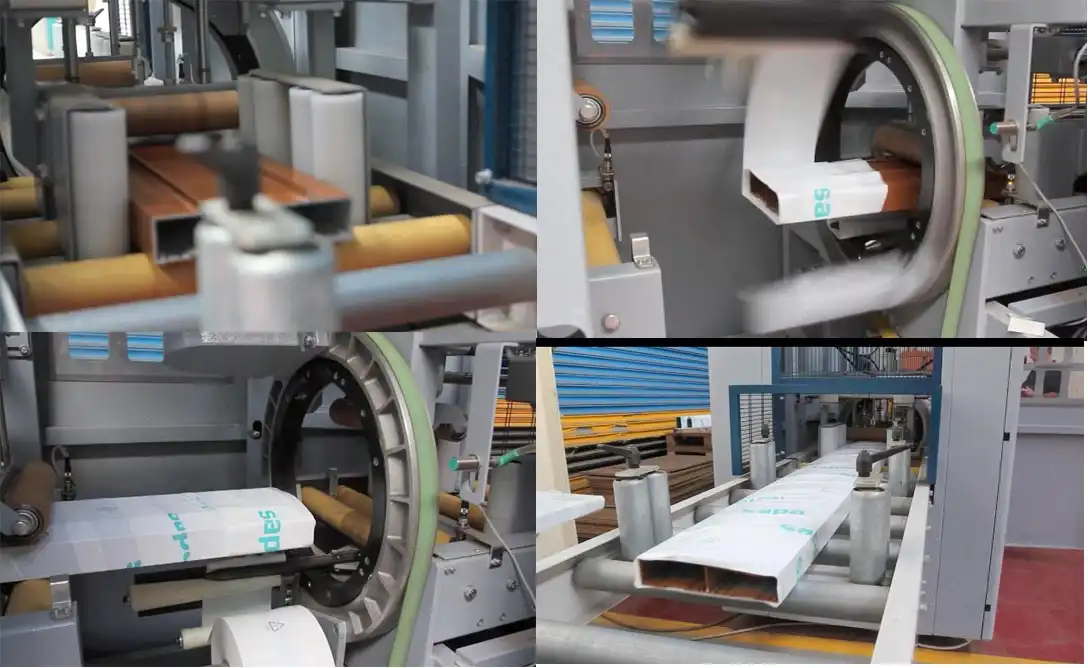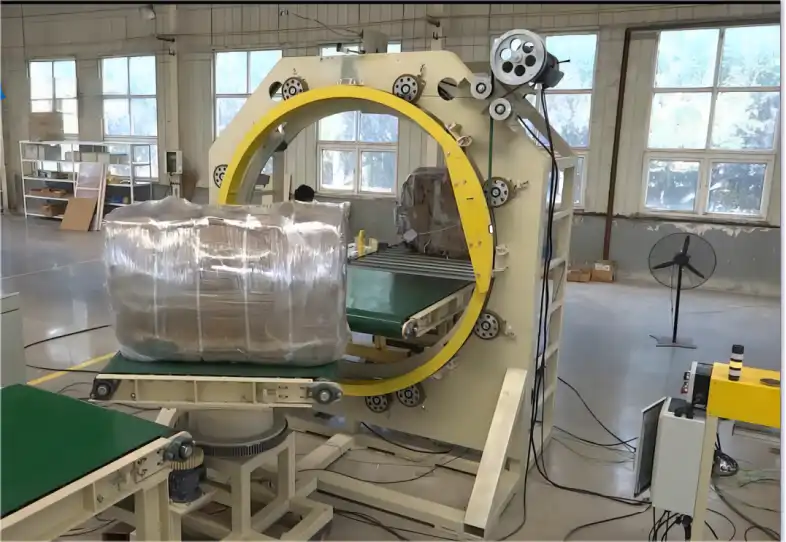Horizontal Cargo Wrapping Machine: Market Analysis for Effective Packaging
In today’s fast-paced global economy, the demand for efficient packaging solutions has never been higher. As industries evolve and supply chains become more complex, businesses are continuously seeking ways to enhance productivity, reduce labor costs, and ensure product safety during transit. One key solution that has gained significant traction in recent years is the horizontal cargo wrapping machine.
This machine has emerged as a pivotal tool for businesses across various sectors, providing an automated, reliable, and efficient method for wrapping and securing cargo. From the logistics industry to manufacturing, automated wrapping systems are now essential for handling large volumes of goods. This article delves into a market analysis of the horizontal cargo wrapping machine, exploring its importance in modern packaging, its impact on operational efficiency, and the market trends that are driving its adoption worldwide.
Understanding Horizontal Cargo Wrapping Machines
What Is a Horizontal Cargo Wrapping Machine?
A horizontal cargo wrapping machine is a specialized device used to wrap cargo in protective films, ensuring that goods are safely and securely packaged for transport or storage. Unlike vertical wrapping machines, which are commonly used for palletized goods, horizontal wrapping machines are designed to handle items that are long, wide, or irregularly shaped. This makes them ideal for packaging materials such as pipes, doors, windows, and other bulky items.
These machines are typically automated, allowing for high-speed wrapping with minimal human intervention. The cargo is fed through the machine on a conveyor, where it is wrapped in stretch film, protecting it from damage, dust, moisture, and other environmental factors. Automation is the key feature that makes these machines highly efficient, as they reduce the need for manual labor while ensuring consistent, high-quality packaging.
Key Features of Horizontal Cargo Wrapping Machines
Modern horizontal cargo wrapping machines come with several advanced features that improve their performance and adaptability to different types of cargo. Some of the key features include:
-
Adjustable wrapping tension: Allows for fine-tuning of the wrapping force to suit different materials, ensuring that the cargo is securely wrapped without causing damage.
-
Automated film cutting and sealing: Enhances operational speed by automating the process of cutting and sealing the wrapping film after the cargo has been wrapped.
-
Customizable wrapping patterns: Many machines allow users to select specific wrapping patterns depending on the type of cargo, providing added protection where needed.
-
Integration with conveyor systems: Horizontal cargo wrapping machines can be easily integrated into existing conveyor systems, allowing for seamless packaging in high-volume operations.
These features not only enhance the efficiency of the wrapping process but also ensure that the cargo is securely packaged to withstand the rigors of transportation and storage.
Market Drivers: Why Businesses Are Turning to Automated Wrapping Solutions
Rising Demand for Operational Efficiency
In an increasingly competitive global market, businesses are under constant pressure to improve operational efficiency. Manual packaging processes are time-consuming and often lead to inconsistent results. Human error, fatigue, and variability in wrapping quality can negatively impact product protection and, ultimately, a company’s bottom line.
Automated horizontal cargo wrapping machines address these issues by offering a faster, more reliable, and consistent method of packaging. These machines can operate continuously with minimal supervision, significantly increasing the speed of packaging operations while reducing the need for manual labor. By automating the packaging process, businesses can meet higher demand without having to hire additional workers or invest in costly overtime hours.
Labor Shortages and the Shift Towards Automation
One of the primary drivers behind the increased adoption of automated packaging machines is the ongoing labor shortage affecting industries worldwide. Finding skilled labor to handle repetitive, manual tasks such as cargo wrapping has become increasingly difficult. This has prompted many businesses to explore automation as a solution.
Horizontal cargo wrapping machines are ideal for filling this gap, as they can operate with little human intervention, reducing dependency on labor. This not only lowers labor costs but also allows companies to redirect their workforce to more critical, high-skill tasks. Automation also reduces the risks associated with worker injuries from heavy lifting or repetitive motion, further improving workplace safety and reducing the cost of workers' compensation claims.
The Rise of E-commerce and Global Supply Chains
The rapid growth of e-commerce has also fueled the demand for automated packaging solutions. As more businesses expand their online presence and sell products globally, the need for efficient packaging solutions becomes more critical. Horizontal cargo wrapping machines allow businesses to package goods quickly and securely, ensuring that products reach customers in perfect condition.
Global supply chains have also become more complex, with goods being transported across vast distances and through various climates. Automated wrapping machines provide the necessary protection against dust, moisture, and damage, ensuring that goods remain intact throughout the entire logistics process. This has made them a valuable asset for companies involved in international shipping and logistics.
Cost Benefits: Reducing Packaging Expenses with Automation
Lowering Labor Costs
One of the most immediate and impactful benefits of investing in horizontal cargo wrapping machines is the reduction in labor costs. Manual wrapping processes require several workers to handle, position, and wrap cargo, which can be both time-consuming and costly. As labor costs continue to rise globally, businesses are seeking ways to cut expenses without sacrificing productivity.
Automated wrapping machines significantly reduce the need for manual labor by handling the entire wrapping process automatically. A single machine can replace multiple workers, leading to substantial savings in wages, benefits, and training costs. Additionally, since automated systems can operate around the clock with minimal supervision, businesses can increase their output without the need for additional staff or overtime pay.
Minimizing Material Waste
Another key cost-saving benefit of automated wrapping systems is the reduction in material waste. Manual wrapping often results in inconsistent use of wrapping film, with some workers applying too much and others too little. This inconsistency can lead to both wasted materials and inadequately wrapped products, increasing the likelihood of damage during transit.
Horizontal cargo wrapping machines, on the other hand, are programmed to apply the exact amount of wrapping film needed for each item. This precision ensures that the cargo is adequately protected while minimizing material usage. Over time, the savings on wrapping materials can be substantial, particularly for businesses that handle large volumes of goods.
Improved Product Protection and Reduced Damage Costs
Product damage during transport is a major concern for businesses, particularly those involved in shipping fragile or high-value goods. Improperly wrapped cargo is more susceptible to damage from environmental factors such as moisture, dust, or physical impact. This can lead to costly returns, repairs, or replacements, which directly impact a company’s profitability.
Automated horizontal wrapping machines provide a consistent and secure wrap every time, ensuring that goods are protected from the elements and the rigors of transportation. By reducing the likelihood of product damage, businesses can minimize the costs associated with returns and customer dissatisfaction, improving their overall bottom line.
Technological Advancements Driving the Market
Integration with Smart Systems
As technology continues to advance, horizontal cargo wrapping machines are becoming more sophisticated. Many modern systems now come equipped with smart technology that allows for remote monitoring and control. Through the use of Internet of Things (IoT) technology, operators can monitor the performance of the machine, adjust settings, and troubleshoot issues from a remote location.
This integration with smart systems not only improves the efficiency of the wrapping process but also allows businesses to gather valuable data on machine performance, material usage, and maintenance needs. By analyzing this data, companies can optimize their operations, reduce downtime, and extend the lifespan of their equipment.
Energy Efficiency and Sustainability
Sustainability is becoming a key concern for businesses across all industries, and packaging is no exception. As environmental regulations tighten and consumer demand for eco-friendly practices grows, companies are looking for ways to reduce their environmental impact.
Many modern horizontal cargo wrapping machines are designed with energy efficiency in mind. They consume less power while still providing high-speed wrapping, allowing businesses to lower their energy costs and reduce their carbon footprint. Additionally, some machines are compatible with biodegradable or recyclable wrapping materials, further contributing to a company’s sustainability goals.
Market Outlook: Trends and Growth Opportunities
Increasing Adoption Across Multiple Industries
The market for horizontal cargo wrapping machines is expected to grow steadily over the next few years, driven by increased adoption across various industries. While logistics and manufacturing have traditionally been the primary users of these machines, other sectors such as agriculture, construction, and retail are also beginning to recognize their benefits.
In agriculture, for example, large machinery parts and harvested goods can be efficiently wrapped for transport. In construction, bulky materials like steel beams or wooden planks can be quickly secured for safe handling. Retailers are also adopting these machines to streamline the packaging of oversized or irregularly shaped products.
Expansion in Emerging Markets
Emerging markets, particularly in Asia-Pacific and Latin America, are expected to play a significant role in the growth of the horizontal cargo wrapping machine market. As industrialization continues in these regions, businesses are investing in automated solutions to improve their packaging processes and keep up with global competition.
In these markets, the need for faster, more efficient, and cost-effective packaging solutions is driving demand for horizontal cargo wrapping machines. Local manufacturers are also starting to produce these machines, making them more accessible to smaller businesses looking to automate their packaging lines.
Conclusion: Embracing the Future of Packaging with Horizontal Cargo Wrapping Machines
The rise of horizontal cargo wrapping machines represents a significant shift in the way businesses approach packaging. By automating the wrapping process, companies can reduce labor costs, improve operational efficiency, and ensure that their products are securely packaged for transport. The adoption of these machines is being driven by several key factors, including the growing need for efficiency, the impact of labor shortages, and the rise of global supply chains.
As technology continues to advance, horizontal cargo wrapping machines will become even more integral to modern packaging operations.
